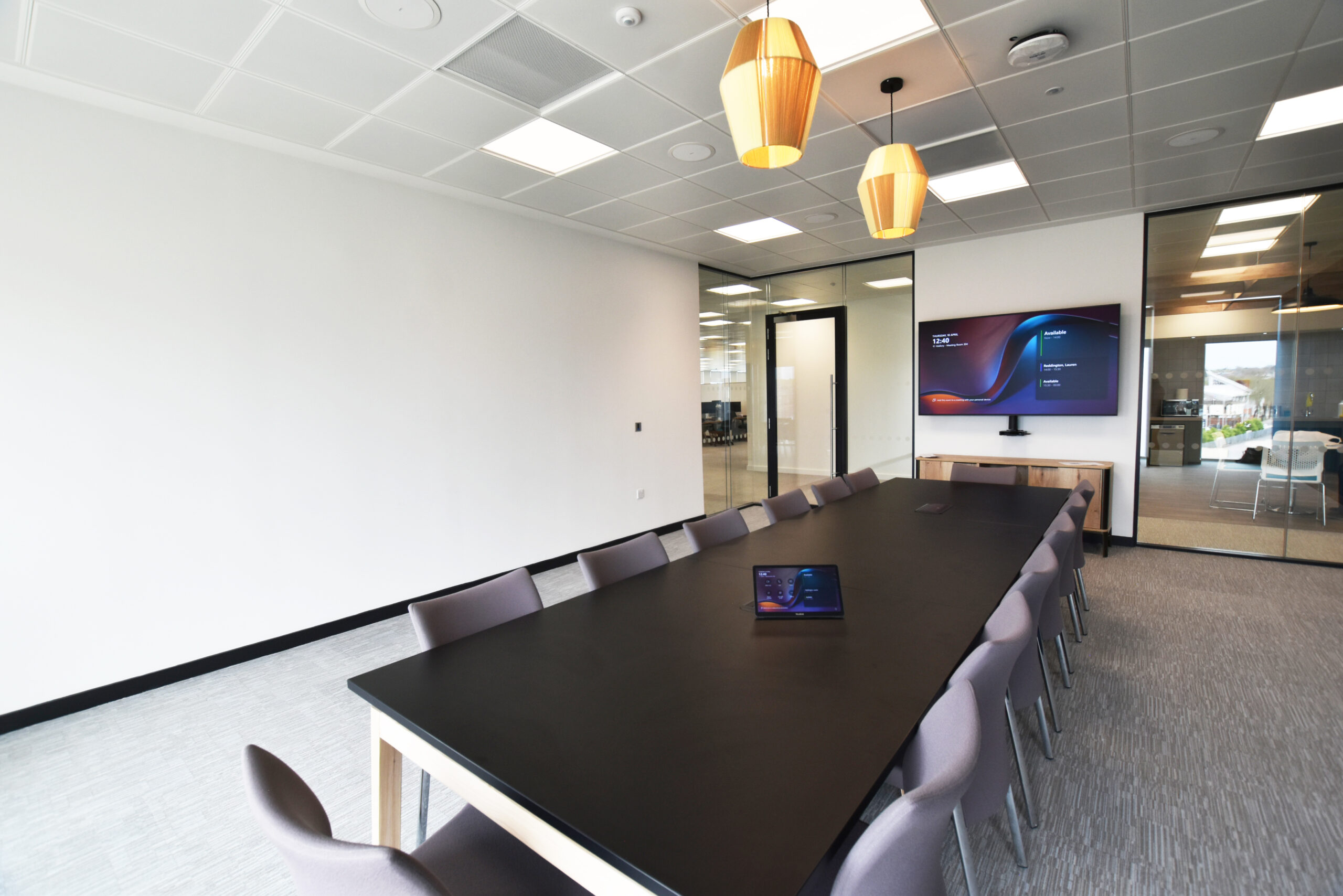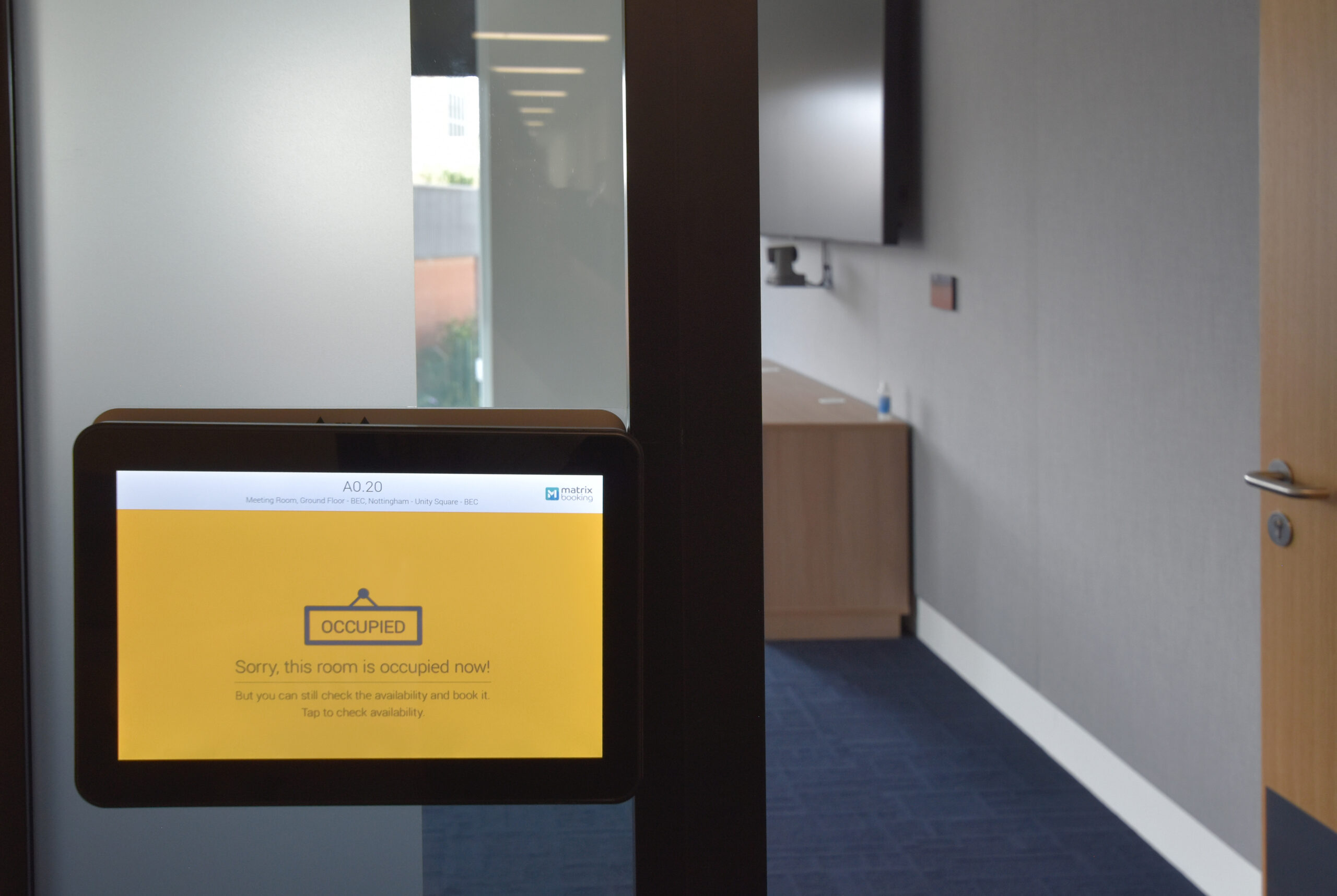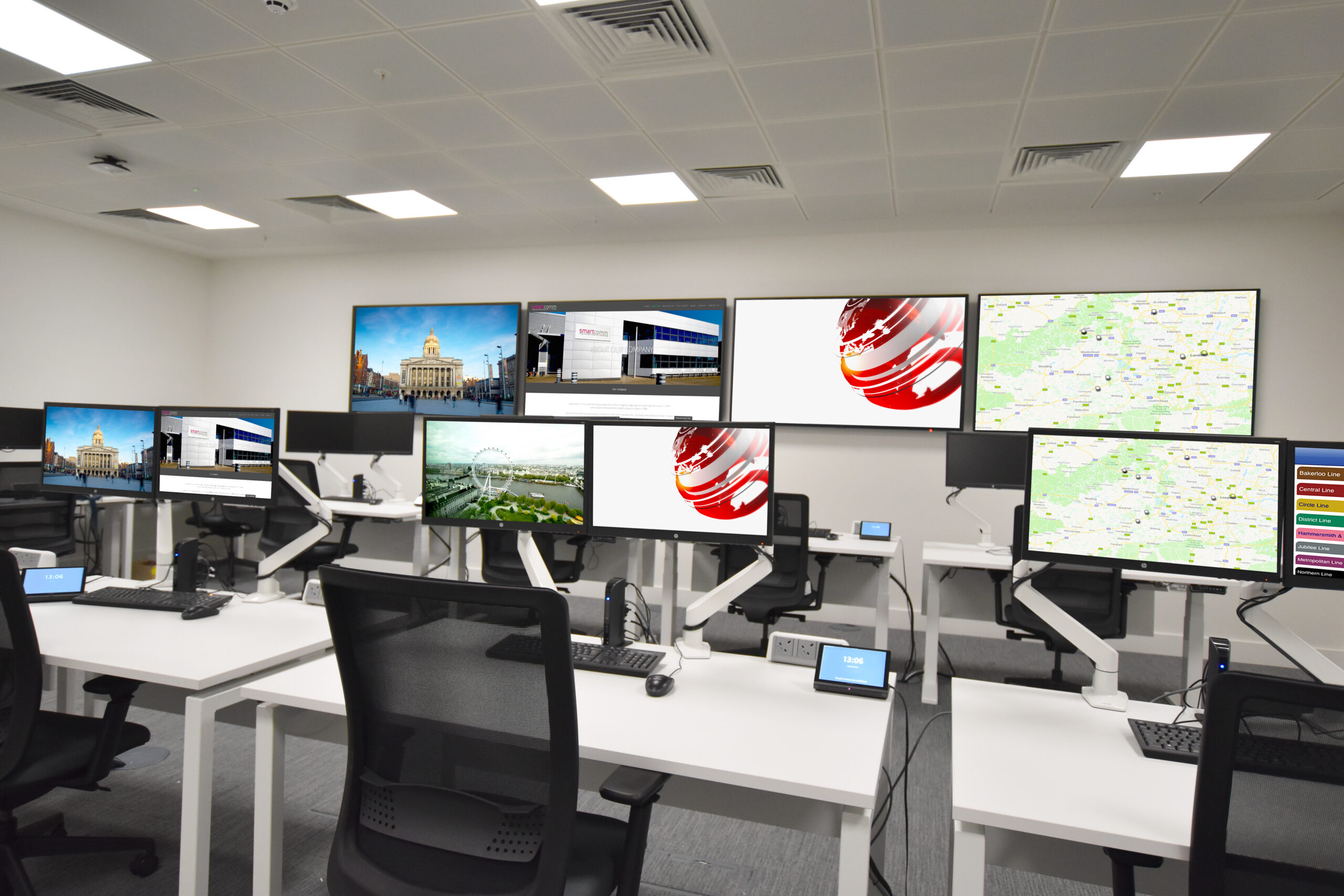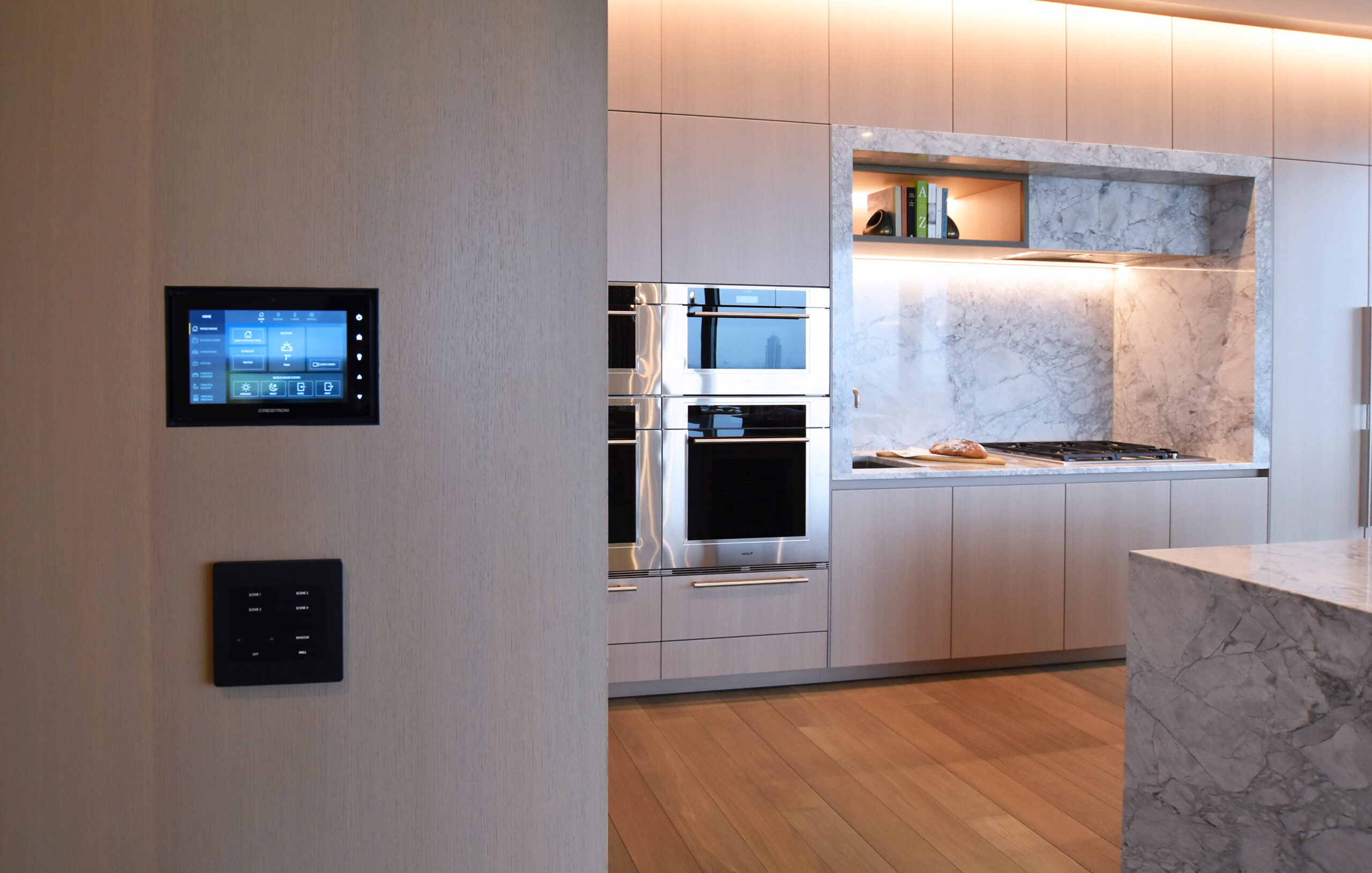
What is a control system user interface?
The user interface is how a human interacts with technology or a digital product. A user interface is usually an app on a tablet, remote control or other device which uses visual and sometimes audio elements, to help the user interact with the whole system. User interfaces can be used in every environment where there is technology, from homes to offices and everything in between.
Why do we install user interfaces?
They make it easy for users to use very complex and powerful systems by simplifying and consolidating the commands. With a control system user interface, someone can change lots of features to pre-set levels, such as lighting, windows, window treatments, HVAC and music, with one touch of a button. This can include turning everything off, which is useful to prevent resource waste and can be extremely helpful when leaving the premises.
A user interface should be as intuitive and easy to use as possible as this provides further benefits. When the user interface is easy, people are more likely to use the systems and take advantage of the benefits. This can especially be seen for commercial projects with powerful conferencing and meeting solutions. When the user interface is easy, staff tend to use the full functionality of the equipment and then have a better overall meeting experience. This in turn optimises resources, meeting outcomes and increases the ROI of the project.
They also enhance the user experience by delivering a more accurate, convenient and accessible way for users to interact with technology, rather than via switches or by going to each individual system separately.
Key components of a User Interface:
-
Visual Elements:
The visual aspect of a user interface includes traditional graphical user interface (GUI) components like buttons, icons, sliders, and images. Additionally, it may incorporate animations, colour changes, and dynamic visual feedback to respond to user actions.
-
Audio Elements:
The audio component involves using sound effects, voice prompts, synthesized speech, background music, or other auditory cues to communicate information or guide users through different actions and processes. By incorporating audio cues and voice guidance, individuals with limited or no vision can interact effectively with the system helping with inclusivity.
-
Selection and Control Elements:
Selection and control can be as simple as a button or checkbox though can be more complicated. Depending on the system and user requirements, they can include dropdown menus, toggles, and text fields. These controls allow the user to effectively communicate with the system.
-
Information Elements:
Informational components allow the system to provide information back to the user. This can include confirming an action, alerting the user about an error, or providing status updates. Icons, notifications, progress bars, tooltips and an audio component are all examples of informational components.
-
Navigational components:
These help the user find their way through the product. Wayfinding elements like sliders, search fields and tags all facilitate user engagement for a seamless experience.
-
Containers:
These keep the user interface organized, grouping similar elements. Containers also set a maximum width for content to be displayed, depending on the user’s screen size. Headers, tabs, and accordion menus are just some of the containers you’ll see.
If you have a project in the pipeline and would like to know more about the many user interfaces available, we can help. Contact us to arrange a free, no obligation chat with one of our experts. They will be able to help you with technology and any of our services. You can contact us here.






